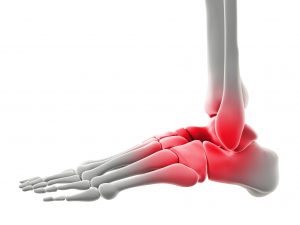Chronic Foot, Ankle Pain After Lumbar Decompression Surgery

After physical therapy and other conservative measures failed, a woman experiencing pain and weakness in her legs and lower back underwent lumbar decompression surgery. Immediately following the surgery, she developed severe pain in her right foot; 3 months later, she underwent an additional decompressive procedure. However, the pain in her right foot persisted.
During a 2-year period, the woman underwent various injections and trials with different medications. When the pain worsened, she was referred to a pain specialist who inserted a spinal cord stimulator. Despite multiple attempts to reprogram the stimulator, the patient saw no improvement, and it was eventually removed.
In 2015, she was referred to Nandan Lad, MD, PhD, a neurosurgeon specializing in pain management at Duke Health, to discuss possible interventions for her pain. Lad informed her of a new therapy awaiting approval by the US Food and Drug Administration (FDA) for the treatment of adults with complex regional pain syndrome. In February 2016, the therapy was approved, and the patient returned to Duke.
Question: What was the novel therapy that Duke was able to offer this patient?
Answer: One of the first medical professionals in the United States to perform the surgery, Lad implanted the Axium Neurostimulator System (St Jude Medical/Spinal Modulation, Menlo Park, CA), a medical device used for dorsal root ganglion (DRG) stimulation.
Lad is excited about the potential of the device: “This new therapy serves as a novel neuromodulation paradigm by allowing us to target the DRG—an important stopping point for pain signals relaying information from the lower limbs to the brain. This provides a level of specificity not available with previous stimulation systems.”
Lad explains that the typical stimulation targets for foot pain are L4 and L5. However, because the patient’s L5 DRG was encased in scar tissue from prior surgeries, he inserted a single lead at the level of the L4 DRG.
Postoperatively, the patient noticed almost immediate relief from her neuropathic pain.
“Before, complex regional pain syndrome patients either learned to live with their pain or they tried temporary treatments that had no lasting benefit,” Lad says. “Now we can offer this new therapy for a whole group of patients who previously didn’t really have any good options.”
Lad notes the patient has made an excellent recovery, with a significant reduction in her foot pain and notable improvement in walking and her overall quality of life.
“I think this technology is just in its infancy,” Lad remarks. “As we learn to target specific nerves, we will be able to treat different types of pain with an unparalleled degree of specificity.”
Lad predicts that the new therapy will also benefit other patients with limited treatment options, such as those with nerve pain following hernia or knee surgery, lower extremity pain caused by diabetic neuropathy, or chemotherapy-induced pain.
“It’s just starting off now, but DRG stimulation has a lot of potential and can be life changing for patients who have been living with chronic pain,” he adds.
